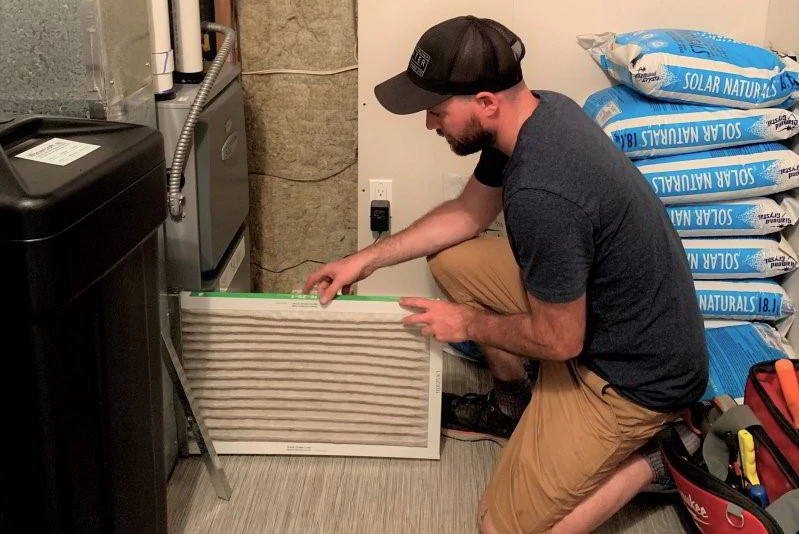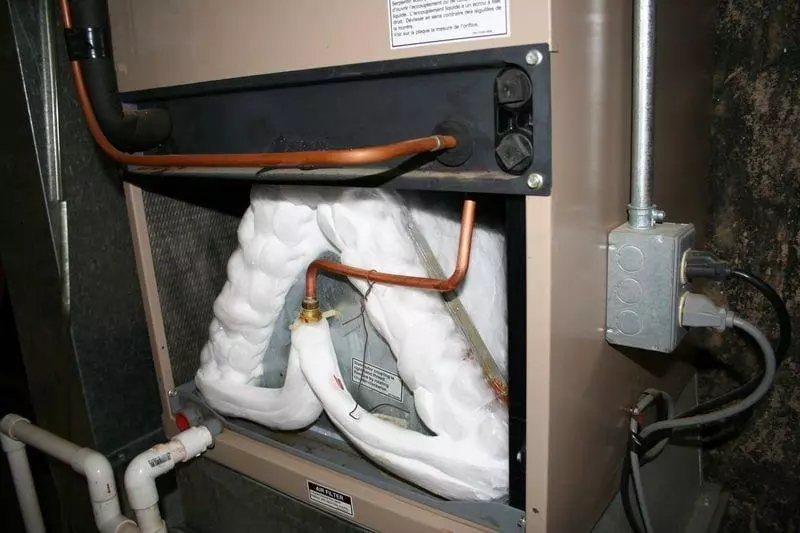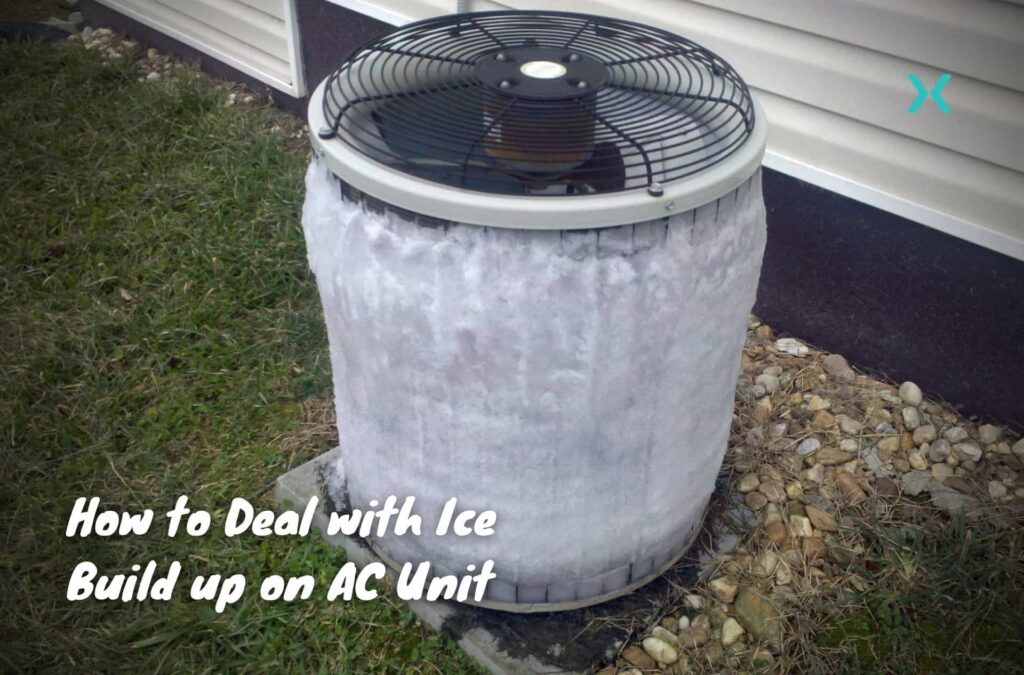⭐ Why Is My Air Conditioner Freezing Up?
Does your home’s air conditioning have ice forming on the inside evaporator coil of your HVAC unit? Are you wondering what could have caused it, and do you know how to fix it?
As a homeowner, you can check out a few things without calling an HVAC technician. We have listed them below for easy reference.
Table of Contents
⭐ Ice Build up on AC Unit? Check for Restricted Air Flow

The primary cause of ice build-up on an air conditioner is restricted airflow.
Without the proper airflow to flow over the evaporator coil, the temperature will quickly drop below the freezing point of water.
Ice will now begin to accumulate on the inside evaporator coil.
If you’re running a heat pump in winter, this can also happen outside on the condenser coil.
Your air conditioner works by expanding refrigerant gas inside the evaporating coil, making it extremely cold.
The refrigerant then soaks up the latent heat in the air in your home and transports it outside, where it can dump it into the outside air.
If the airflow is restricted and not enough air flows over the evaporator coil, the balance of cool vs. warm air is interrupted, leading to a temperature drop, and promoting ice build-up.
Your air filter is the first thing you should check to prevent ice buildup.
The filter keeps the airflow in your home clean and prevents build-up and damage to your AC system.
If the dirty air filter is clogged, you restrict airflow and introduce dust and debris into the AC system.
Debris buildup causes dirty evaporator coils, which attract moisture, further exacerbating your ice problem.
Furnace filters should be changed regularly to keep your system working at its peak performance.
You can learn more about air filters in this Air Filter Guide.
If the filter is clean, then you may have other issues.
Other problems that can cause your AC to freeze are:
- Refrigerant Leaks or low refrigerant levels
- Blocked condensate drain lines
- Low temperature outside
- The nighttime setting of your thermostat is too low
- Short Cycling AC
- AC fan isn’t working
⭐ Frozen Evaporator Coils?

A frozen outdoor unit on your heat pump is pretty apparent, but when it’s an evaporator coil inside your indoor air handler, it’s less obvious at first glance.
If you need to clean a dirty evaporator coil, you can use a soft brush and compressed air to clean it.
Remember not to use any sharp tools as they can damage evaporator coils.
Signs that it’s frozen include:
- Condensation on the surface of your indoor air handler
- Condensation around the condensate drain
- Ice builds up on the refrigerant lines outside
- And, of course, the most obvious, ice build-up on the evap coil itself
⭐ What to Do When Your AC has Frozen Up
Let’s tackle the obvious first. Switch off your AC to start the thawing-out process.
Next up, find your furnace filter and check it for cleanliness.
If it’s dirty and clogged in any way, replace it. Make sure you put it in the right way…
Take your time and allow the ice to melt completely.
Depending on the ambient temperature, this can take many hours, but it needs to be completely clear of ice before starting it up again.
If you do want to speed up the process, you can use a heat gun or a hair dryer on a low setting and use that hot air to help thaw the ice on your air conditioner.
Thawing out a frozen AC can cause an extraordinary amount of water to flow through your drainage system, which could cause a leak inside your home, so ensure it’s not blocked and can handle this amount of water.
Once your air conditioner is thawed out and you have replaced your air filter with a new one, fire up your air conditioner and check for correct functionality.
If you are still having issues with ice build-up and your AC won’t turn on, call in the friendly experts from Phyxter Home Services to come and check it out.
⭐ What You Should Not Do

Once your AC is frozen, it’s imperative not to keep it running.
Running a frozen AC, you run a very high risk of damaging other costly components like the compressor and the blower motor.
These parts have high price tags and are sometimes not worth replacing, depending on the age and state of your HVAC unit.
But, of course, you are on the hook for a whole new AC if that’s the case.
Under no circumstances attempt to scrape or pick the ice off the evaporator or condenser coils.
These contain precious refrigerant gas, which you can accidentally release into the atmosphere.
🛑 This is illegal in most places.
Firstly, it’s damaging to the environment, and replacing the coil you damaged and the subsequent refilling can be super expensive.
Damaging your AC in any way, shape, or form won’t fix your icy problem and will worsen your problem, including the hit to your wallet.
There are enough hammer mechanics in this world, so there’s no need to add another one…
Conclusion to Ice Build up on AC Unit

Having an AC turn into a solid block of ice during summer is never fun but it can be resolved by following the above steps.
However, taking shortcuts like trying to remove the ice with tools will most likely lead to further damage, costing you big bucks.
Ice build-up on your AC primarily indicates a bigger problem, and you must find out what that problem is.
If you have followed all the steps above and are still having issues with ice build-up, call your local HVAC experts and schedule an appointment to check it out.
Related Reading:

